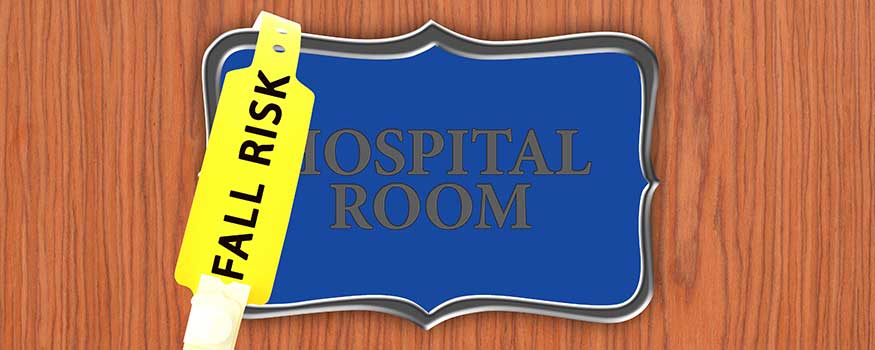At St. Joseph’s Hospital and Health Center in Syracuse, NY, we’re committed to providing a safe, comfortable, caring environment for our patients. We believe all patients deserve to be cared for in the most humane way possible to preserve their dignity and individual rights. This means ensuring our patients’ physical safety, including preventing injuries from falls, during a hospital stay.
Central to our fall prevention program is the hospital’s patient safety care bundle. We found that bundling (standardizing) fall prevention practices prevents more falls than nonbundling or variable approaches. We also learned that involving all unit and house-wide staff in this approach inspires greater buy-in and participation and fosters best practices.
Our bundling journey
St. Joseph’s didn’t always use bundling to prevent falls. Our journey began in 2010 when I was asked to lead a task force to review and revise the hospital’s fall prevention program. After reviewing many articles in the nursing literature, our task force decided to take different concepts that proved effective and combine them into the bundled approach.
All clinical and nonclinical staff were taught how to use the new bundle. Rapid-cycle piloting in select care areas was implemented. Following a process and outcome review and revision of the bundling approach, full implementation followed throughout our facilities. St. Joseph’s bundled approach to fall prevention includes safety huddles, hourly rounding, use of the Morse scale, individual care plans, and post-fall debriefings.
Safety huddle: To consistently identify patient safety needs for all shifts, each unit has a safety component as part of its shift-change huddle. The safety huddle must be documented on a form designed by the unit.
Hourly rounding: Nurses round on patients hourly. The RN uses a consistent, caring conversation, which starts with an introduction, such as, “Mrs. Jones, I’m Marty, your nurse, and I’m here to check on you.” Unless necessary, sleeping patients aren’t awakened. Rounds are documented in the electronic documentation system. The RN admitting new patients explains that hourly rounding is done to anticipate their needs and ensure their safety.
Morse scale: The Morse fall scale assessment tool, which is individualized for each patient, assesses for the following measures:
• history of falls
• secondary diagnosis
• ambulatory aid
• I.V.s/normal saline lock
• gait/transfer
• mental status.
According to St. Joseph’s fall prevention protocol, the Morse scale is used upon admission of every inpatient 14 and older, once during every day shift, when a patient’s level of care changes, upon transfer, and after a fall.
Individualized care interventions: The following interventions are implemented based on individual patient needs:
• Falls that take place while the patient is hospitalized are documented on the plan of care under the Morse scale section. When physical therapy or medication review is requested, it’s documented in the plan of care under the safety and activity section and communicated during handoff.
• Nurses have the option to ask for a gerontology review, which includes consultation with an expert gerontology RN and a pharmacist, and a physical therapy screen.
• Door signs or door magnets alerting staff to the patient’s risk of falls must be used when the patient’s Morse scale score is ≥ 85 (considered high risk), when staff believe the patient is at risk of falling despite a lower fall assessment score, and when patients have an epidural infusion until they’re able to ambulate independently.
• Bed exit and chair alarms* must be used for patients who overestimate or forget their limitations and for those with an impaired gait transfer (as documented in the Morse assessment). Patients with bed exit alarms also must have a chair alarm when out of bed. Any patient with a bed exit alarm, chair alarm, or door magnet is not to be left alone on the commode or in the bathroom.
Post-fall defusing: Immediately after a fall, we hold a debriefing with the staff involved with the patient’s care. At the debriefing, similar to the huddle concept, we review and discuss the event to help formulate a collaborative approach for immediate care, treatment, and review and prevention of potential future falls.
Practice implications
Since our implementation of the bundled approach to fall prevention, we have seen a decrease in the number of falls and a reduction in the severity of injury when falls do occur. (See Reduction in falls.) Perhaps most important, though, is that an all-staff approach to quality care inspires greater buy-in and participation, which fosters best-practice outcomes.
Case study
A man in his late 80s was admitted to the medical-surgical unit after several falls at home, including one that resulted in a hip fracture. He had a urinary tract infection (UTI) and was confused and sleep deprived. His family reported that he’d fallen many times at home. Our challenge was to keep him safe while treating his UTI and giving him the rest he needed to get well.
The patient’s admitting nurse evaluated him with a Morse scale of more than 85, so a magnet indicating this designation was placed on his door and every shift was notified of his fall risk every day. In addition to the door magnet, our interventions included a bed alarm when the patient was in bed, a chair alarm, hip protectors to add extra protection if he fell, and floor mats* on each side of the bed.
As a result of our interventions, the patient got much-needed rest, his UTI resolved, his cognition improved, and he was able to return home. We gave the hip protectors to the family for use at home.
*Manufactured by TIDI Products
Editor’s note: This is one in a series of recurring case studies describing success stories in preventing falls and injuries from falls. The series is brought to you by TIDI Products. Watch for the next case study in the September issue of American Nurse Today.
Marty Pond, MS, RN-BC–Gerontology is the NICHE Coordinator and Falls Chairperson, St. Joseph’s Hospital and Health Center, Syracuse, New York
